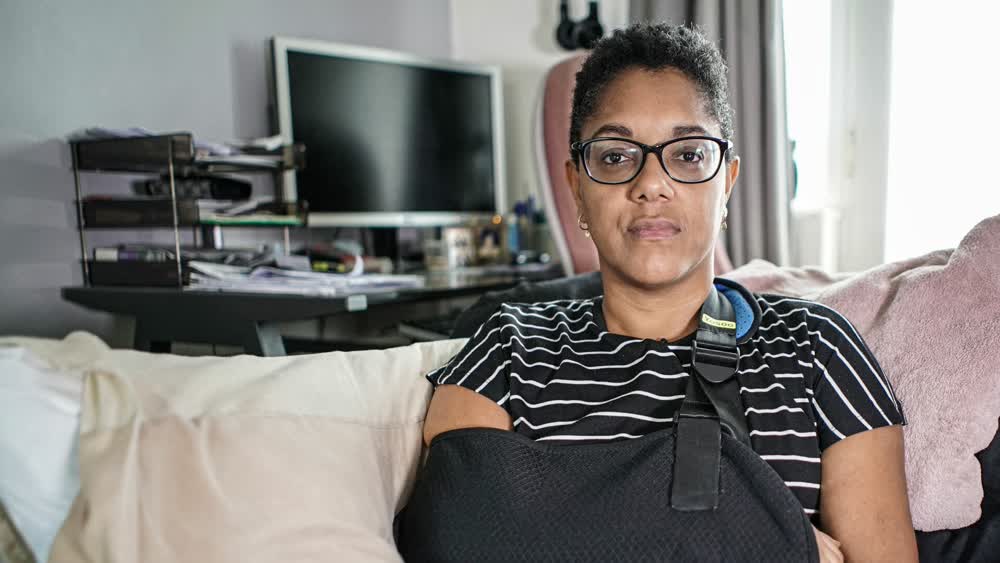A documentary by Channel 5 aims to provide a glimpse into a different reality; into the four walls of pain, where people are living through all the hell you can imagine.
It is a reality that, maybe, is not familiar to you and me, but it is to millions of people experiencing the worst life possible. A life that can tie them to their beds and lock them in their homes.
Chronic Pain: How to live with it is a masterpiece, but I mind you, it’s not for the faint-hearted. It’s highly emotional as we follow three people who suffer from different sorts of chronic pain conditions that have a massive impact on their quality of life.
Chronic pain is no joke: according to estimates, almost 28 million Brits suffer from chronic pain on a daily basis and it’s fast becoming one of the biggest health problems of the 21st century.
Despite their prevalence, these conditions are often very difficult to treat. Many people living with chronic pain will exhaust every available treatment option – but sometimes nothing helps. To make things worse, doctors are in the dark as well – as the causes of chronic pain are often elusive and, apparently, non-existent.
You can imagine the ordeal for patients who, though they are experiencing excruciating pain, those who are there to help them are unable to tell them why they are feeling this pain; or in some cases, they may not even be believed by their doctors.
The documentary presents clearly how people who are affected by chronic pain can struggle to keep their job or even live a social life.
In some cases, patients may even be unable to get up from bed – living with the reality that there is no effective treatment available to them.
What should they do then?
Of the three people in the documentary, Andie, tried everything but nothing helped her. She herniated a disc in her lower back in 2014, and everything collapsed from that point.

At one point, she was paralysed down one side and spent long months downstairs as she couldn’t climb the stairs. Her symptoms included pains and spasms in her neck, as well as a sudden weakness in her arms and legs.
As a sort of last resort, after having visited specialists, rheumatologists, and neurologists, she turned to medical cannabis.
She said: “I don’t want to be drugged up. I don’t want to be sleeping all day. I’ve had it all my life, and I need something to keep me existing, basically.”
Dr Mikael Sodergren from Sapphire Clinics said: “Fibromyalgia is a difficult condition to diagnose. We don’t have a blood test that tells us somebody has fibromyalgia.
“It’s a diagnosis that is often made on the description of the symptoms that the patient has. It’s associated with some muscle weakness, but it can affect many parts of the body.”
Andie is lucky – sort of. Her whole family (husband and three children) is able to provide full-time support, so she can exist.
After trying a number of “useless” treatments and being unable to even stand up without help, she looked up a medical cannabis clinic in London.
Dr Michael Platt, Medical Director at Sapphire Medical Clinics, said: “Chronic pain is a real issue for so many individuals. With cannabis, a new type of medicine which works a completely different way to anything else we have, we have a new weapon to fight some of the issues to do with chronic pain.”

After the consultation, Andie’s husband was in awe and asked the one-million-pound question.
He said: “I’ve never heard anyone talk about it. No doctors ever. Why? Because clearly this plant was designed to help in certain areas of some kind.”
However, medical cannabis is serious medicine, and like every other medicine, it has its side effects.
Specialised clinicians must help to identify the suitable dosage for each individual and patient, as effects can differ dramatically.
That’s what happened to Andie. She had a hard time getting used to medical cannabis – the side effects of the THC were too much to bear.
Dr Sodergren added: “Medical cannabis is not a magical cure. Medical cannabis is a medical treatment like most others, in that some patients have a really good outcome from medical cannabis, but we have other patients who have not been helped much.”
However, trained clinicians – like those at Sapphire who prescribed medical cannabis for Andie – are often able to adjust the dosage to maximise results and minimise side effects.
She said: “I’m feeling I’m sleeping a lot deeper; not waking up much in the night, and just feeling that little bit better when I wake up in the morning.
“I used to think, ‘Oh my god, what’s next?’ I don’t anymore. I just live for each day as best I can.”
Chronic pain is a serious issue, and while medical cannabis should not be considered a magical cure – it may be able to help many people. Andie is still in pain to this day but thankfully, with the appropriate expertise and the right dosage, she can now live a somewhat normal life.
This is another example of how important it is to have a discussion about access to medical cannabis in the UK (and globally).
It is a shame that this medicine is not accessible for millions who might need it. Documentaries like Chronic Pain: How to live with it by Channel 5 could help change the approach to patients, the condition and the plant in general.

